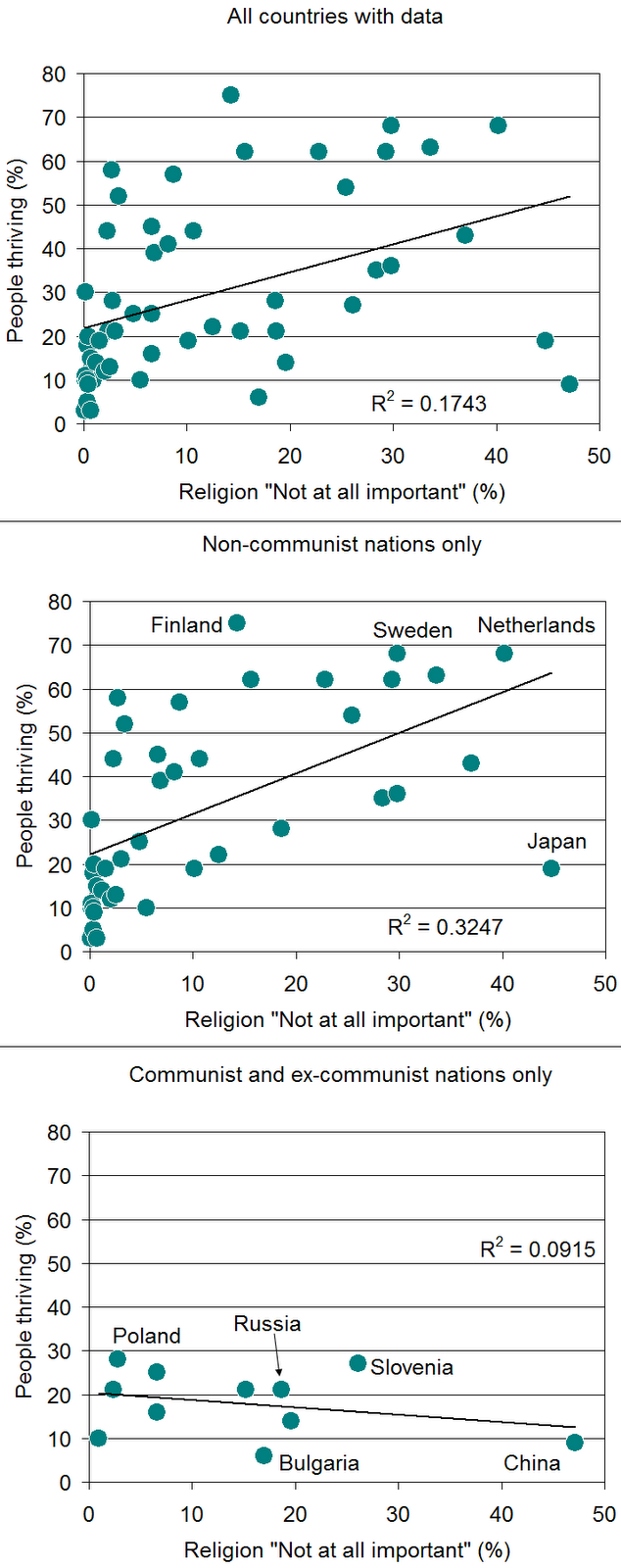Regular readers of this blog will know that nations with a lot of atheists tend to come out on top on a number of measures of ‘societal success‘ – wealth, education, life expectancy, and corruption, for example. They also score higher on a general measure called the Peace Index.
So when I learned that Gallup had published a new international ranking, the Global Well Being Index, I naturally wanted to see how national scores on this measure compare with atheism.
 A core part of their measure is the number of people who report they are thriving, defined as follows:
A core part of their measure is the number of people who report they are thriving, defined as follows:
Gallup measures life satisfaction by asking respondents to rate their present and future lives on a “ladder” scale with steps numbered from 0 to 10, where “0” indicates the worst possible life and “10” the best possible life. Individuals who rate their current lives a “7” or higher and their future an “8” or higher are considered thriving.
I compared the percentage of people in each nation who say that they are ‘thriving’ with the percentage who say that religion is “Not at all important’ to them (data from the 5th wave of the World Values Survey). So this isn’t a comparison of individual piety with individual ‘thriving’ – it’s a comparison of national averages.
The top graph of the three shows how it pans out. Countries with more atheists also have more people who say that they are thriving. But the relationship is pretty weak (the R-squared of 0.17 means that about 17% of the variation in ‘thriving’ is explained statistically by the variation in atheism – although cause and effect could go either way, of course).
That’s not too surprising. Given that countries with more atheists also tend to be wealthier, I was expecting the relationship to be even stronger.
The weak relationship is explained in part by the fact that there are two kinds of countries with lots of atheists. There are countries where atheism is organic, driven by high living standards. And there are countries where atheism has been imposed (the communist and ex-communist countries).
The comparison between these two different kinds of atheist countries is revealing.
Among countries that have never been communist, there is a much stronger relationship between the percent of atheists and the percent of people thriving. The outlier, Japan, has many atheists but is not thriving – no doubt due to the lacklustre economical performance in recent decades.
Communist and ex-communist countries, however, without exception score very badly on the ‘thriving’ index. What’s more there is no relationship – or perhaps even a slightly negative one – with the numbers of atheists. I suspect this is because the dead hand of communism is still dragging people down in these nations.
There is an interesting symmetry between China and Japan. The first is undergoing wild economic growth, while the latter is in the doldrums. And yet they both have similar numbers of atheists, and neither are thriving!
 This article by Tom Rees was first published on Epiphenom. It is licensed under Creative Commons.
This article by Tom Rees was first published on Epiphenom. It is licensed under Creative Commons.














